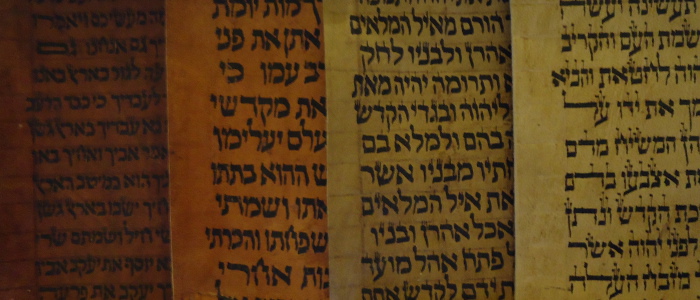Ancient Torah manuscripts
All Sefer Torah (Thora) are written on kosher klaf or vellum. In Europe this was usually on the skin of calf, sheep or goat. In the Middle-East and the north of Africa this was usually on deer and gazelle parchment. Because the material and the processes differ per region, the manuscripts vary in color, texture and size. Manuscripts from Europe are usually white to grey or yellow. Moroccan manuscripts can be yellow-brown to deep reddish brown. Yemen scrolls are usually red to reddish brown, but can also be as white or brownish white as European manuscripts. Fragments found today in collections can date back to the 15th century or can even date back to early Christian times.
We started collecting in the 90’s and nowadays our collection consists of hundreds of Torah scrolls and fragments from Europe, Morocco, Turkey, Tunis, Algeria, Syria, Yemen, Israel and Iraq and date back from medieval times to the early 1900’s. Also we have some Esther books from different regions.

According to rabbinic tradition, all of the teachings found in the Torah were given by God through the prophet Moses, some at Mount Sinai and others at the Tabernacle, and all the teachings were written down by Moses, which resulted in the Torah that exists today. According to the Midrash, the Torah was created prior to the creation of the world, and was used as the blueprint for Creation. The majority of Biblical scholars believe that the written books were a product of the Babylonian captivity (c. 600 BC), based on earlier written and oral traditions, which could only have arisen from separate communities within ancient Israel, and that it was completed by the period of Achaemenid rule (c. 400 BCE). Manuscript Torah scrolls are still scribed and used for ritual purposes; this is called a Sefer Torah (Book of Torah). It is believed that no changes were ever introduced into copies of the Bible during rabbinic times.
According to Jewish law, a sefer Torah is a copy of the formal Hebrew text handwritten on gevil or klaf (forms of parchment) by using a quill (or other permitted writing utensil) dipped in ink.
